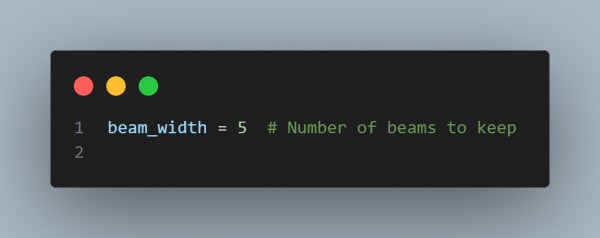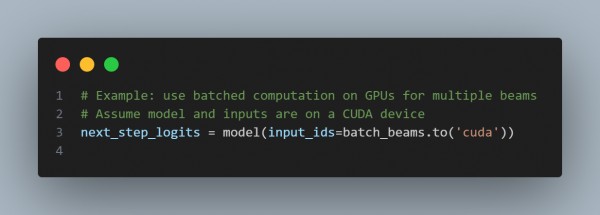Coding strategies to optimize beam search in terms of speed and quality are as follows :
- Pruning Low-Scoring Beams Early: Set a beam width (k) to limit the number of beams retained at each step. Discard beams with low probabilities to save computation time.

- Use Log Probabilities to Avoid Underflow: To maintain numerical stability and avoid underflow, sum log probabilities instead of multiplying probabilities.

- Implement Length Penalty for Longer Sentences: Apply a length penalty to prevent shorter sequences from having artificially high scores, thus balancing quality by favoring more complete sentences.

- Parallelize Beam Computation: It leverages parallel computation (e.g., batch processing on GPU) to compute scores for multiple beams at each step, speeding up processing.

In the code above, we have used Pruning and log probabilities to reduce computational load and the length penalty, balanced quality by favoring complete, coherent sentences and Parallel processing, utilized hardware to compute scores for multiple beams simultaneously, and boosted speed.
These strategies help achieve high-quality, coherent text generation with beam search while managing computation effectively.
 REGISTER FOR FREE WEBINAR
X
REGISTER FOR FREE WEBINAR
X
 Thank you for registering
Join Edureka Meetup community for 100+ Free Webinars each month
JOIN MEETUP GROUP
Thank you for registering
Join Edureka Meetup community for 100+ Free Webinars each month
JOIN MEETUP GROUP